Remembering the Gwangju Uprising
DIFFICULT HISTORIES
Liz White
8/1/2024
Jeonil Building 245 in Gwangju looks like many other buildings in South Korea - it is an unassuming, renovated, white multi-storey structure that houses several businesses with an clear focus on history, culture and tourism. However, the number 245 in its name does not simply relate to its location - it also relates to the number of bullets that are known to have been fired into the building by a military helicopter on May 18th, 1980 - or at least the number of bullets that left traces in the building structure. If you head up to 5-18 Memorial Hall on the 10th floor, you can still see most of those bullet holes, each marked with a yellow sticker and number. Clearly this building is a part of a dark time in South Korea's not too distant history.

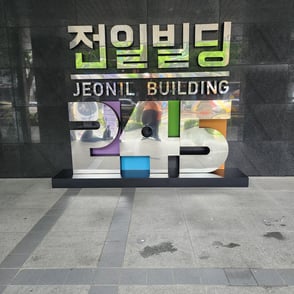
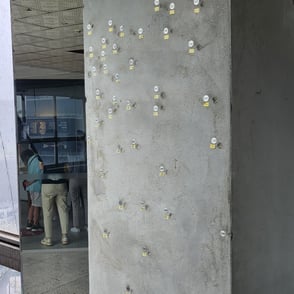
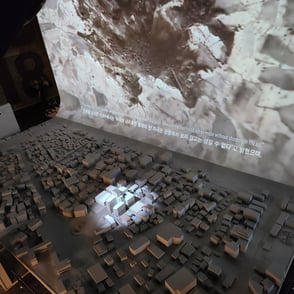
Jeonil Building 245 in Gwangju, South Korea (July 2024).
The 1970s was a period of political oppression and civil unrest in South Korea. Following the 1979 assassination of President Park Chung-Hee, the head of the Defense Security Command, Chun Doo-Hwan, orchestrated a coup d'état, taking control of the military. He declared martial law and this led to student protests throughout the country. The full force of this oppression is clearly seen in Gwangju, where thousands of people, not only students, took part in protests. Official reports say that around 200 people died between the 18th and 27th May, 1980, but the real number remains unclear.
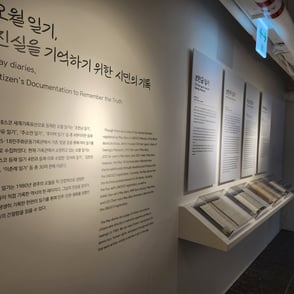
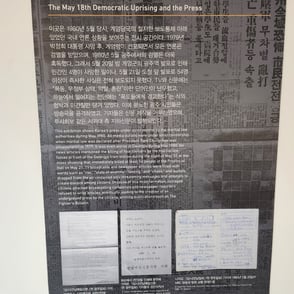
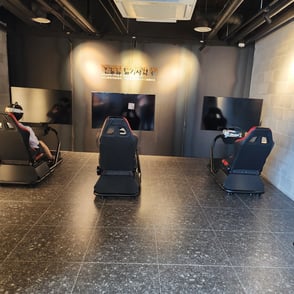
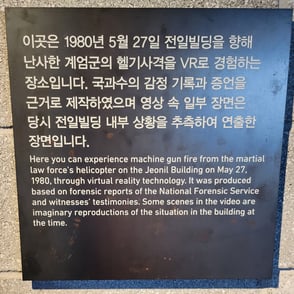
parts of the 5-18 Memorial Hall display, Jeonil Building 245 in Gwangju, South Korea (July 2024).
5-18 Memorial Hall uses various methods to tell the story of the Gwangju Uprising. Particularly poignant is the use of diaries from people who lived in the area at the time. You can also see a timeline of events, find out how the press was censored, and experience what happened in the city using a combination of short animation, lighting and a 3D model. One notable inclusion in the display is a VR experience of machine gun fire from the military helicopter (more on that coming up in the future).
5-18 Memorial Park, Gwangju, South Korea (July 2024).

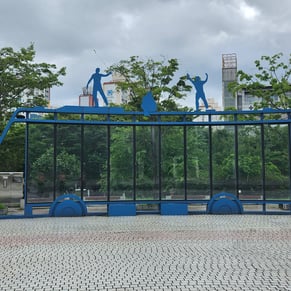
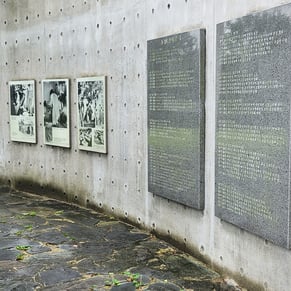
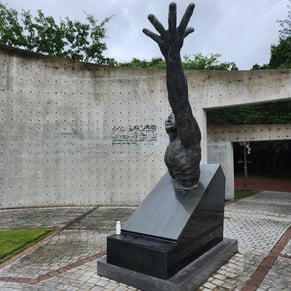
Although the Gwangju Uprising was subdued, it does mark an important step in South Korea's development and democracy and as it occurred only 44 years ago, it also sits within recent memory. There are still many living relatives of those who died or were injured and even for those too young to remember, traces can be found throughout Gwangju: Jeonil Building 245, 5-18 Memorial Park and the May 18th National Cemetery to name but a few. More recently, there have been perpetrator trials, the establishment of the May 18 Democratization Movement Truth Commission and even a few South Korean made films which deal with the presidential assassination and coup d'état. It seems then, that the legacy of the period will remain ingrained in the memories of the people of South Korea for a very long time.
